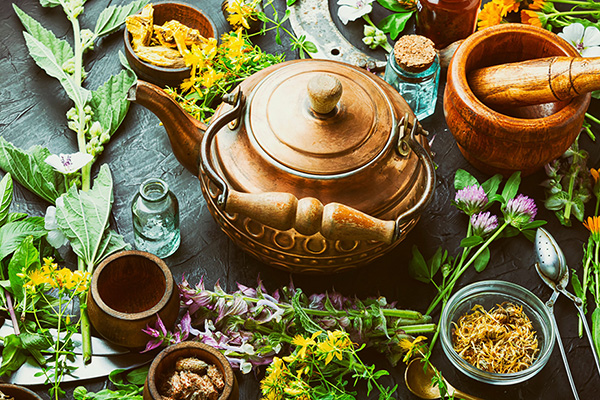energy medicine
Chakra Balancing Is An Essential Self-Care Practice
 I recently attended a very informative talk given by a couple who are both energy healers. The husband is also a respected medium in our area. The topic was the chakra system and how to use it in an energy healing practice.
I recently attended a very informative talk given by a couple who are both energy healers. The husband is also a respected medium in our area. The topic was the chakra system and how to use it in an energy healing practice.
As a psychic practitioner, I already know a lot about the chakra system, but I am always open to other people’s perspectives and possibly even learning something new. I think it is important in any profession to keep an open mind and to have the desire to learn as much as possible. You are never too old, too wise, or too experienced to gain new insights!
So, I was pleasantly surprised that this talk turned out to be a wonderfully informative experience. In particular, the session reminded me of the importance of keeping one’s chakra wheels ‘in tune’, especially if one is in the business of healing or doing readings.
Clearing and balancing the chakras is vital because when a chakra is deprived of harmonious, free-flowing energy, it becomes unbalanced or even blocked, causing dysfunction in the organs and other mind-body functions associated with that chakra, as well as dysfunction throughout the rest of the entire chakra system.
The Modern Practice Of Spiritual Healing
 In a world driven by science and technology, the value of our spiritual health is rarely recognized or appreciated these days, yet it is an essential aspect of our holistic health and well-being.
In a world driven by science and technology, the value of our spiritual health is rarely recognized or appreciated these days, yet it is an essential aspect of our holistic health and well-being.
The truth is that spiritual healing has been practiced since the beginning of time to promote physical, emotional, mental and spiritual well-being. Our ancestors were much wiser in this regard. They had a holistic view of health and wellness that not only focused on the physical and mental, but also honored the spiritual or metaphysical aspects of our existence.
In ancient Egypt, for example, illness was treated as a battle between good and evil, and magical remedies were used in addition to herbal medicines. In ancient Greece, holism underpinned everything, and the soul, mind, and body were considered one.
In Traditional Chinese Medicine, a holistic system practiced for at least 23 centuries, healing is achieved by balancing the yin-yang life force energies that permeate everything in the universe. In the indigenous healing traditions of Native America, holistic health is represented by the four quadrants of the ‘medicine wheel’ or ‘sacred circle,’ namely the physical, emotional, mental, and spiritual states of being.
In Christianity, spiritual healing is documented with many references to the healing power of faith and prayer. The Bible also refers to the spiritual gift of healing, and there are several accounts of Jesus performing miraculous healings. In Hinduism, Ayurveda is a five-thousand-year-old Vedic system of medicine that seeks to restore the balance between the body, mind, and spirit.
The Basics Of Reiki
 Reiki is popular concept in modern spirituality, metaphysics and energy healing. It is therefore good for anyone interested in these fields to have a basic understanding of this technique to engage in discussions with likeminded people in a meaningful way.
Reiki is popular concept in modern spirituality, metaphysics and energy healing. It is therefore good for anyone interested in these fields to have a basic understanding of this technique to engage in discussions with likeminded people in a meaningful way.
The term reiki is a combination of two Japanese words. Rei means ‘divine wisdom’ or ‘divine power,’ and ki means ‘life force energy’ or ‘vital human energy.’ Reiki is therefore a ‘divinely empowered life force.’
Reiki, or rather the system of Reiki, was developed in Japan a century ago by a Buddhist monk known as Mikao Usui. He was a renowned spiritual man who dedicated his life to being of service to others. While seeking spiritual awakening on Mount Kurama, north of the Japanese city of Kyoto, he was divinely inspired with the gift of Reiki. It was introduced to the United States in the late 1930s by Hawayo Hiromi Takata, a Japanese-American woman who received training in Reiki in Tokyo and became a master practitioner.
Although it is more commonly known only as a form of energy healing, true Reiki is in fact a comprehensive spiritual practice and a conscious lifestyle. Yes, it involves the healing of the mind and body, but it also proposes living in total peace with oneself, and being aware of your own unique purpose and spiritual light within. The system of Reiki seeks to remove the layers of fear, worry and attachments that conceal our innate brightness of being.
The Fire Season Of Love And Joy
 In Traditional Chinese Medicine (TCM), there are Five Elements, namely Wood, Fire, Earth, Metal, and Water. These elements are each associated with the seasons, certain emotional states, and specific organs in the physical body. I am personally fascinated with how accurate these correlations can be.
In Traditional Chinese Medicine (TCM), there are Five Elements, namely Wood, Fire, Earth, Metal, and Water. These elements are each associated with the seasons, certain emotional states, and specific organs in the physical body. I am personally fascinated with how accurate these correlations can be.
In the summer season, for example, the element of fire rules. The four organs associated with the fire element is the heart, small intestines, pericardium (or heart protector) and San Jiao, or the ‘triple energizer,’ which is the hollow space inside the trunk of the body.
In TCM, the solid organs each has its counterpart in a ‘hollow organ (Fu).’ The heart, for example, is a solid organ, and the small intestine its hollow counterpart. San Jiao is a body cavity that is able to influence the functioning of other organs and our overall health through the free movement of Qi, the fundamental life force energy.
The fire element represents expansion of energy expanding with heightened activity and excitement. It is further associated with love, joy, harmony, but also disharmony. In extreme cases, too much fiery excitement can cause insomnia, restlessness, and even manic behavior.
A good example of how the joy of the fire season manifests in our everyday life is the fact that summer is the peaktime of the year for weddings. This time of the year our hearts are most open, seeking to be filled with joy. We seem to radiate more light and love in the summer, just like the warm sunshine.
The Sacred Tradition Of Smoke Cleansing
 Smoke cleansing is an ancient spiritual practice found in many faiths, cultures, and wisdom traditions all over the world. These age-old rituals, ceremonies and healing practices involve the burning of various aromatic plants, resins, and woods and have been practiced since humans first discovered fire. Traditionally ceremonies and rituals involving smoke are mostly used for energy cleansings and spiritual blessings, but the purposes, techniques and materials used vary widely among belief systems, tribes, nations, and cultures.
Smoke cleansing is an ancient spiritual practice found in many faiths, cultures, and wisdom traditions all over the world. These age-old rituals, ceremonies and healing practices involve the burning of various aromatic plants, resins, and woods and have been practiced since humans first discovered fire. Traditionally ceremonies and rituals involving smoke are mostly used for energy cleansings and spiritual blessings, but the purposes, techniques and materials used vary widely among belief systems, tribes, nations, and cultures.
The burning of incense, for example, was a revered practice in ancient Egypt as part of religious ceremonies. This practice continues today in the Roman Catholic church, with the burning of incense to amplify prayers and intentions.
In both Hinduism and Buddhism, incense is burnt for ritual offerings and rites, while in ancient China incense was burned during festivals and processions to honor ancestors and household gods, and in Japan it is part of the Shintō purification ritual.
In ancient Rome cinnamon was burnt during funerals. The Assyrians burned various aromatic woods in their homes, temples, and places of healing. In traditional Chinese medicine, the burning of agarwood and sandalwood is done to promote emotional wellness and physical healing.
One of the most well-known smoke cleansing traditions, especially in the United States, is known as smudging. To ‘smudge’ means ‘to make a smoky fire’ or ‘to emit a dense smoke.’ Smudging involves various purification and healing ceremonies originally practiced by the indigenous peoples of the Americas. Certain sacred herbs are traditionally used in smudging to purify and bless people and places, of which the most commonly used today is white sage or salvia apiana, also known as bee sage or sacred sage. It is an evergreen perennial shrub native to the southwestern United States and northwestern Mexico.
Developing Your Herbal Intuition
 Herbal medicine is becoming increasingly popular, and many people are increasingly turning to herbalism as a healthcare supplement, or even a substitute to conventional pharmaceutical medicine. Plants, flowers, and herbs all have unique energetic qualities that make them suitable for various purposes. They are alive and respond to their environment and how they are treated in the same way humans do.
Herbal medicine is becoming increasingly popular, and many people are increasingly turning to herbalism as a healthcare supplement, or even a substitute to conventional pharmaceutical medicine. Plants, flowers, and herbs all have unique energetic qualities that make them suitable for various purposes. They are alive and respond to their environment and how they are treated in the same way humans do.
When we think of herbs, we tend to narrowly categorize them according to the medical conditions they can be used for, or what aspect of our health and wellness they can improve. However, like people, herbs are much more complex and multi-faceted, and have many uses and applications, alone or in combination with other herbs.
To obtain the most benefit from any herb, we need to take the time and have patience to truly get to know the herb. When you meet someone for the first time at a social event, would you diminish the other person’s true worth by instantly deciding they have only one useful trait or redeeming quality, and leave it at that? Taking the time to get acquainted with a particular herb is much like getting to know someone in an intimate friendship.
Selecting herbs to work with or draw upon for healing is a highly intuitive process. The appearance, aroma, taste, texture, and energy vibration of the ideal herb for a specific purpose must speak to us mind, body, and soul. They convey a distinct energy signature and frequency of healing that the intuitively aware user will innately know is best to use at that time.
